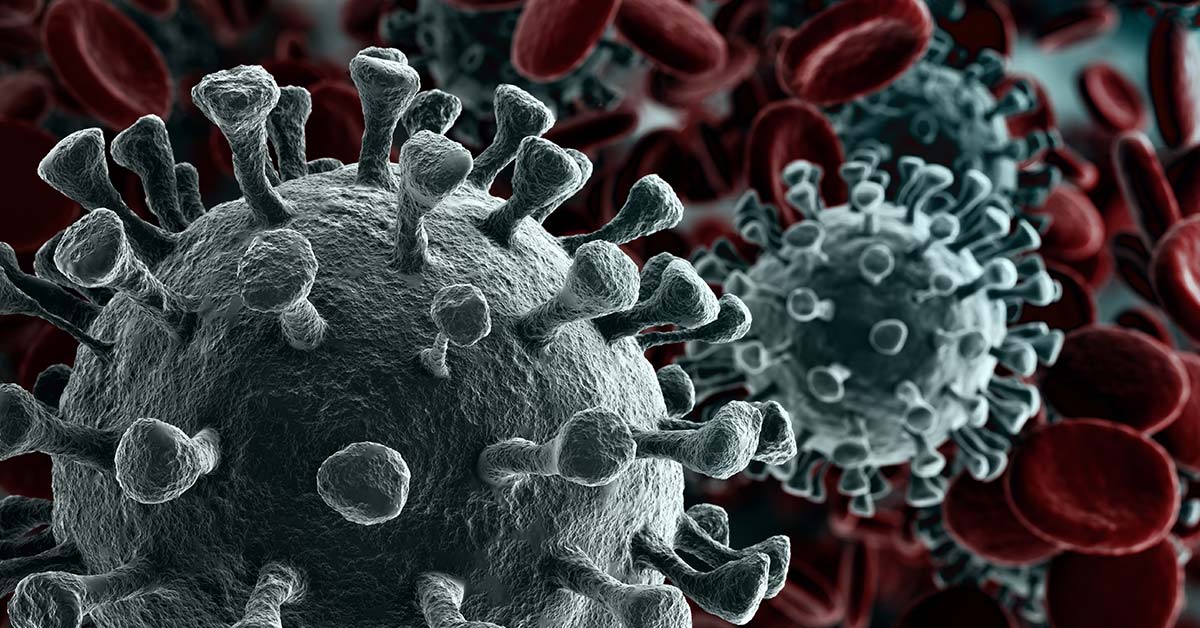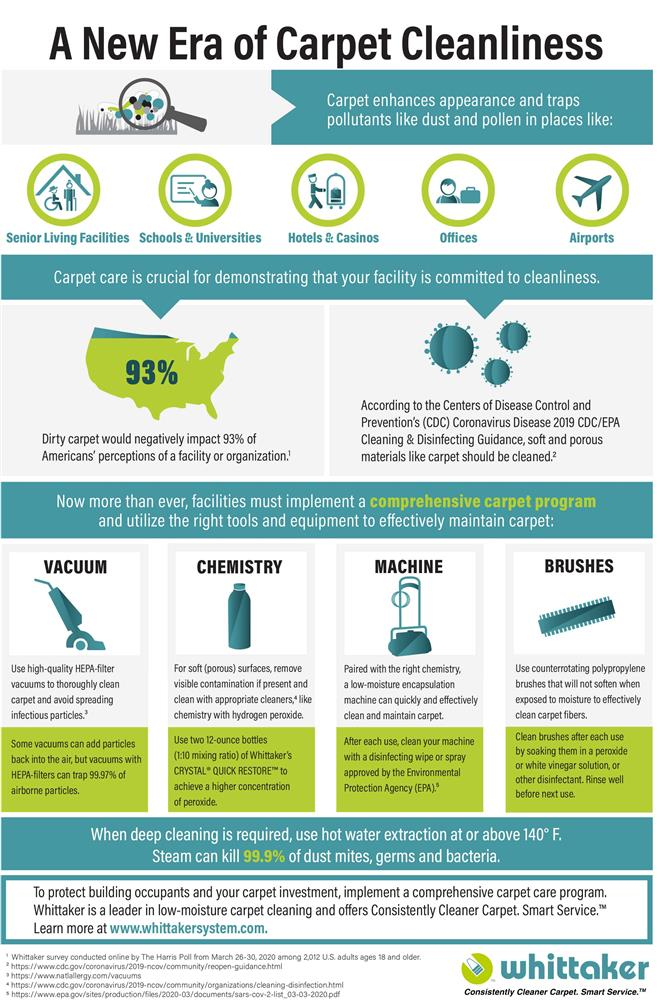As businesses reopen following the novel coronavirus pandemic, it is essential for building service contractors and facility managers to understand and embrace the new expectations around cleanliness. The Centers for Disease Control and Prevention (CDC) Coronavirus Disease 2019 CDC/EPA Cleaning and Disinfecting Guidance is intended to help facilities reduce the risk of exposure to SARS-CoV-2, the virus that causes coronavirus disease (COVID-19). Included in the cleaning guidelines are soft and porous materials such as carpet.
There are many different types of facilities that install carpet, including senior living homes, universities and colleges, offices, hotels and casinos, airports and other large public venues. The right carpet enhances a building’s aesthetic and traps pollutants like dust and pollen, helping to improve indoor air quality (IAQ). It can also create an “at home” like environment and reduce noise pollution. To reap these numerous benefits, it is important to thoroughly clean carpet on a regular basis to remove the build-up of soil and other potentially harmful particles that settle deep into carpet fibers.
Prior to the pandemic, a dirty floor may have resulted in a negative online review or complaint to management. Today, a carpet stain could quickly convey a lack of cleanliness throughout the entire facility. In fact, according to a survey conducted online by The Harris Poll on behalf of Whittaker concluded that among 2,012 U.S. adults ages 18 and older, 93% of Americans say dirty carpet with things like stains, animal hair or food residue in a facility would negatively impact their perception of that business or organization. Some even claimed they would assume the entire facility is not clean.
Now more than ever, carpet care is crucial for demonstrating that your facility is committed to cleanliness. Implementing a comprehensive carpet care program and utilizing the right tools and chemistry to effectively maintain carpet can help assure customers, staff, key stakeholders and others that your organization is taking the necessary steps to create a clean and healthy environment.
Carpet cleaning programs should include a four-step maintenance process, including preventative, daily, interim and restorative cleaning. As facilities enhance cleaning protocols, it’s essential to examine current cleaning equipment and its effectiveness, especially against the spread of infectious disease. A vacuum with a poor or ineffective filter could do more harm than good by releasing pollutants back into the air. Similarly, some carpet cleaning machines use an excessive amount of water, which can create an optimal environment for bacteria and mold to grow.
Many facilities across the globe were forced to close their doors and limit staff due to shelter in place orders. The reopening phase will likely result in new employees coming on board, and some may not have previous experience with cleaning tasks. Even for facilities that employ experienced housekeeping and custodial staff, it’s important to train employees on new cleaning protocols before, during and after the reopening phase. With an increased focus on cleaning, employees will be busier than ever, making it extremely important for facilities to provide user-friendly, intuitive and safe cleaning equipment and chemistries.
To protect building occupants and your carpet investment, we’ve pulled together a helpful infographic detailing the importance of carpet care as we usher in a new era of cleanliness.


